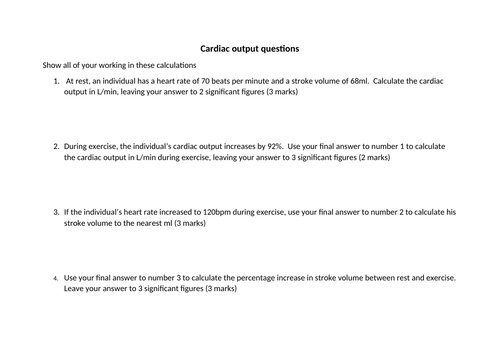


This clear and concise lesson looks at the calculation of cardiac output as the product of stroke volume and heart rate. This engaging PowerPoint and accompanying resource have both been designed to cover point 7.9 (i) of the Pearson Edexcel A-level Biology A (Salters Nuffield) specification which states that students should be able to calculate cardiac output.
The lesson begins by challenging the students to recall that the left ventricle is the heart chamber with the thickest myocardial wall. This leads into the introduction of stroke volume as the volume of blood which is pumped out of the left ventricle each heart beat. A quick quiz game is used to introduce a normative value for the stroke volume and students are encouraged to discuss whether males or females would have higher values and to explain why. A second edition of this quiz reveals a normative value for resting heart rate and this results into the introduction of the equation to calculate cardiac output. A series of questions are used to challenge their ability to apply this equation and percentage change is involved as well. The final part of the lesson looks at the hypertrophy of cardiac muscle and students will look at how this increase in the size of cardiac muscle affects the three factors and will be challenged to explain why with reference to the cardiac cycle that was covered in an earlier topic.
Something went wrong, please try again later.
This resource hasn't been reviewed yet
To ensure quality for our reviews, only customers who have purchased this resource can review it
Report this resourceto let us know if it violates our terms and conditions.
Our customer service team will review your report and will be in touch.